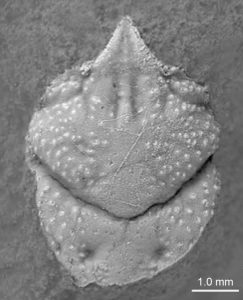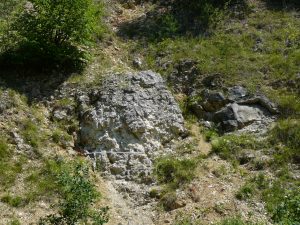
The evolutionary history of hermit crabs (Paguroidea) has been unraveling over the last 15 years. While claws were mainly reported before then, dozens of species based on millimeter-sized carapaces have been discovered and described since 2008. It has become clear that hermit crabs were very diverse already in the Jurassic and Cretaceous periods, when also true crabs (Brachyura) evolved and diversified. In particular in reef environments, many new hermit crabs have been discovered, with no end in sight.

In the summer 2015, UA Museums’ Curator of Paleontology Dr. Adiel Klompmaker traveled to the Szklarka Valley in southern Poland for field work in sponge-microbial reefs that are Late Jurassic (Oxfordian, 160 million years old) in age. Collecting for an hour there in 2013 as part of a conference showed the potential to find fossil decapod crustaceans. During the 5-day field work two years later, many specimens of true crabs and hermit crabs were discovered. Among them were dozens of specimens of hermit crab carapaces and some tail ends.
The specimens were loaned to hermit crab specialist René Fraaije (Oertijdmuseum, The Netherlands), who led the study. The fauna consisted of eight species including two new species new to science, one based on a carapace and the other based on a tail part. This new fauna represents the most diverse, oldest hermit crab fauna known to date! The hermit crabs were found almost exclusively in the sponge-bearing limestones rather than in the platy limestone surrounding these reefs. Clearly, the hermit crabs were true reef dwellers. The scientific paper was published in April 2022.
Reference:
Fraaije, R.H.B., Klompmaker, A.A., Jagt, J.W.M., Krobicki, M., & Van Bakel, B.W.M. (2022). A new, highly diverse paguroid assemblage from the Oxfordian (Upper Jurassic) of southern Poland and its environmental distribution. Neues Jahrbuch für Geologie und Paläontologie – Abhandlungen, 304: 1–12.